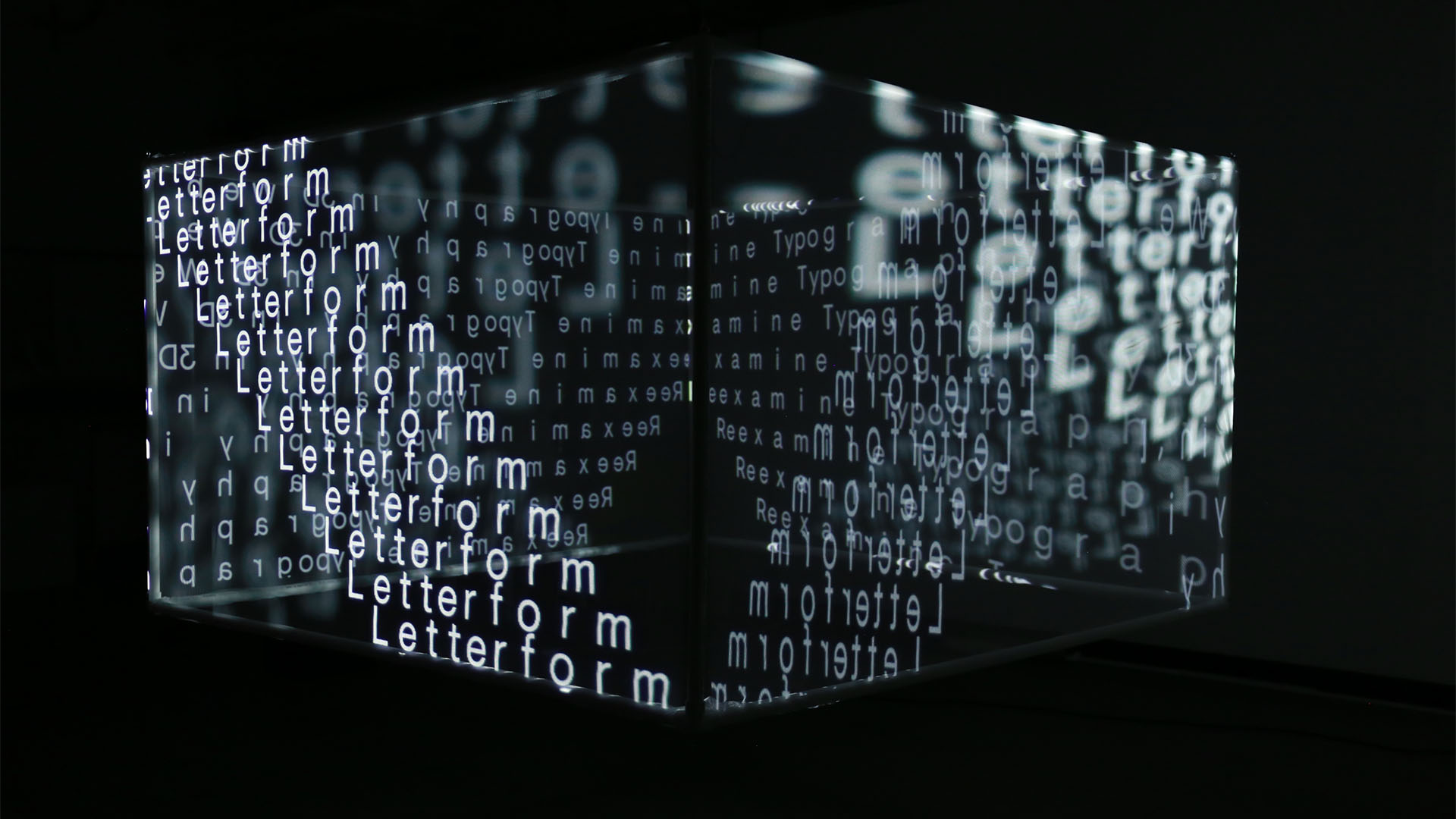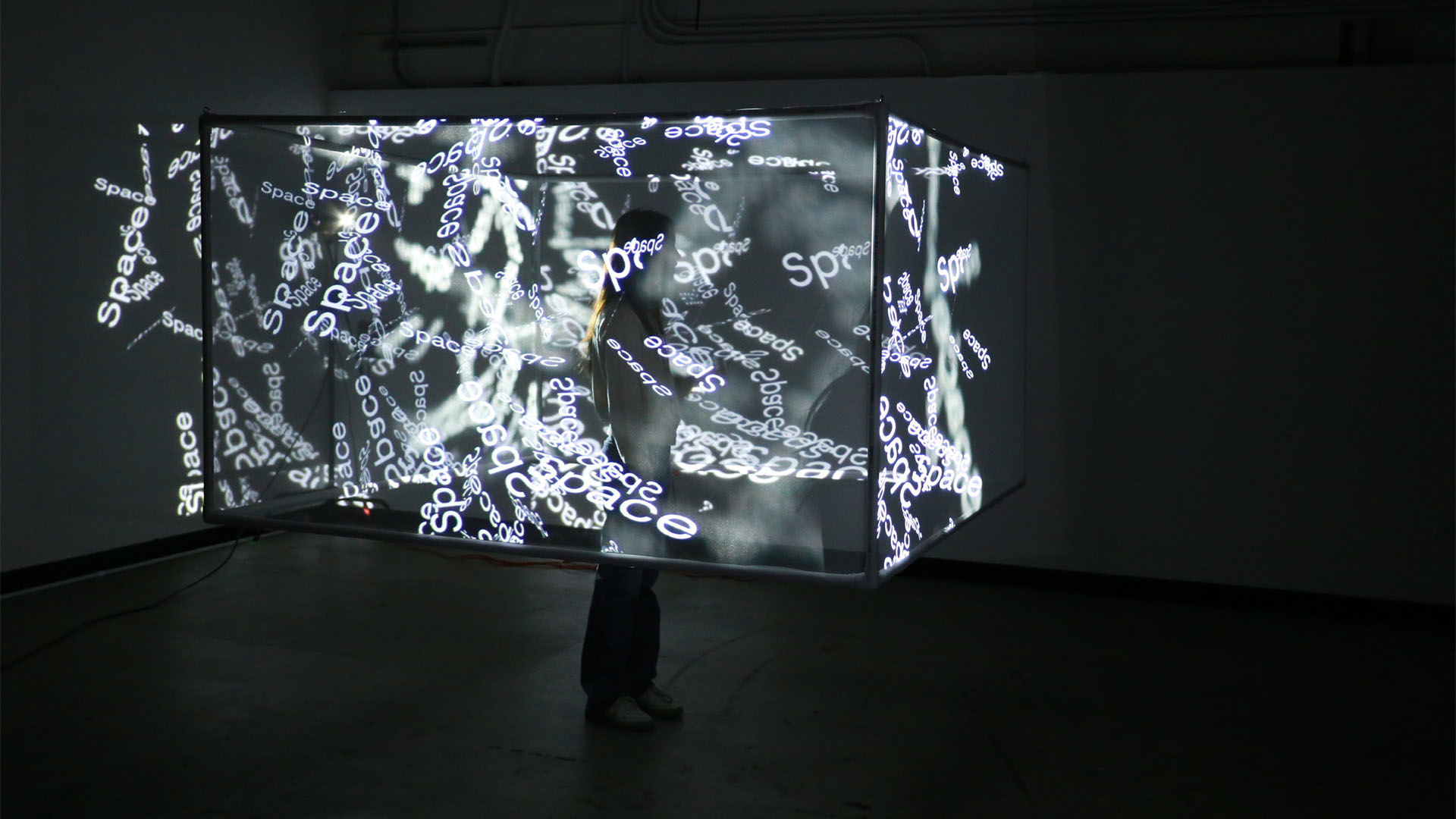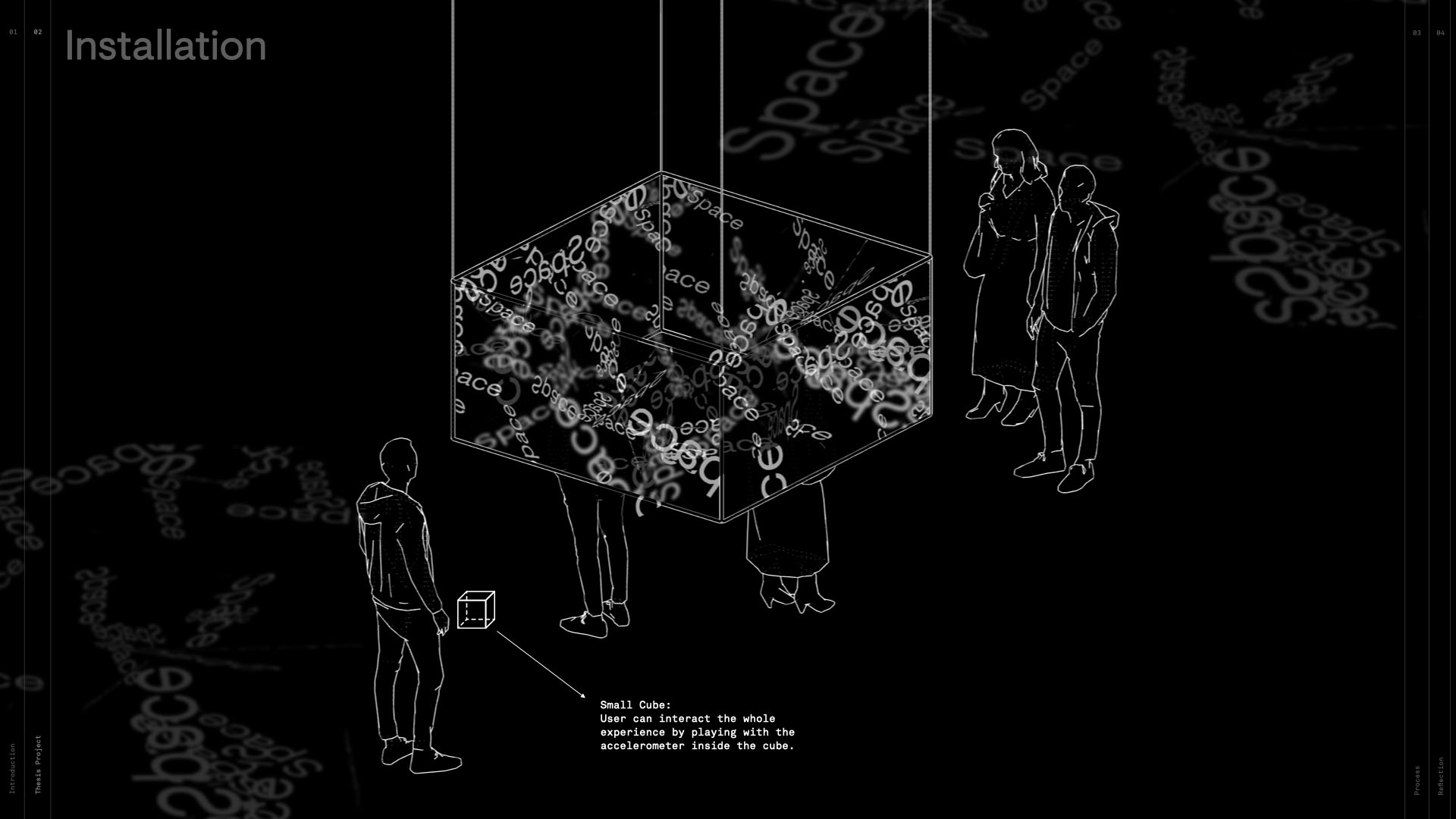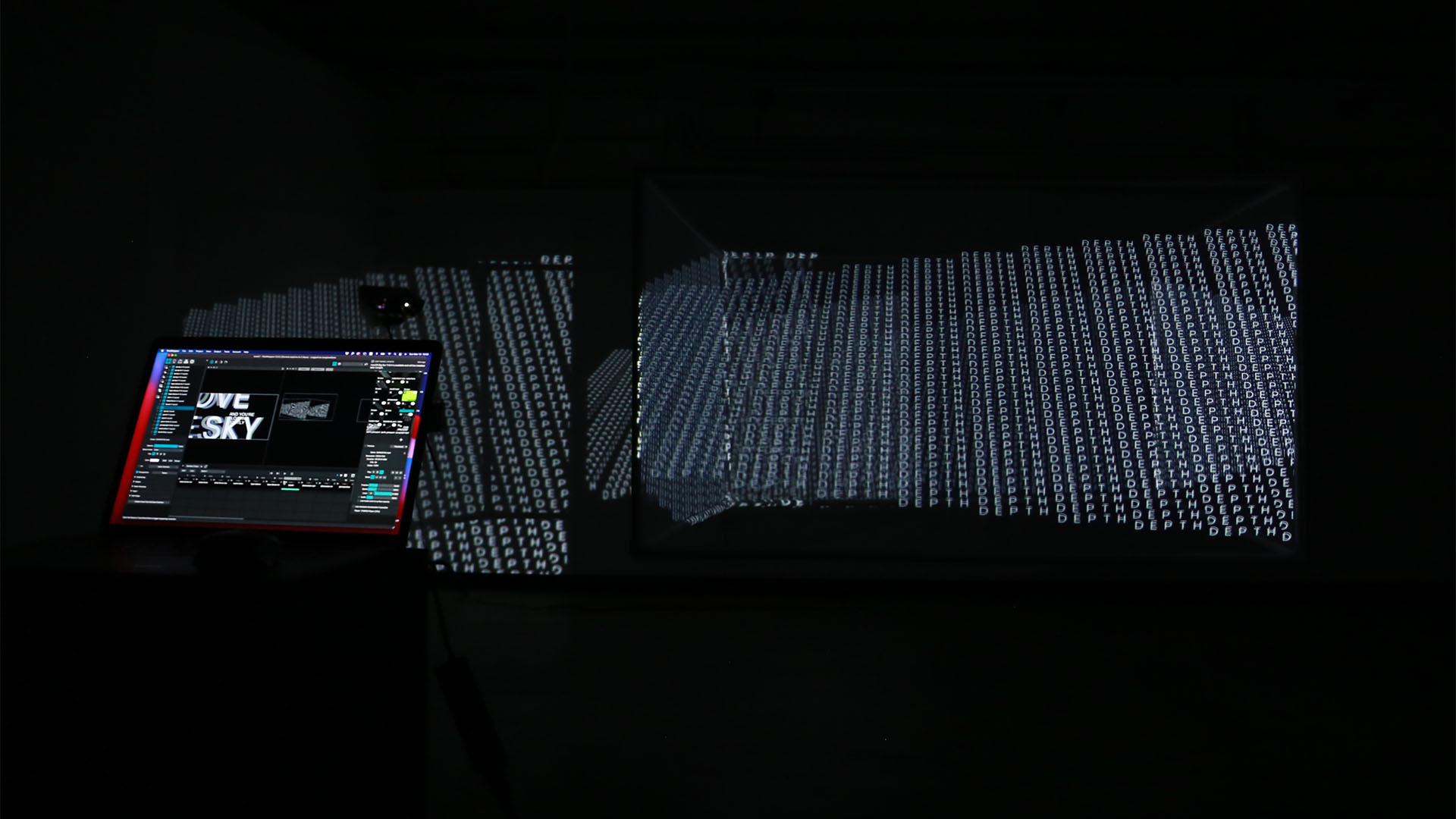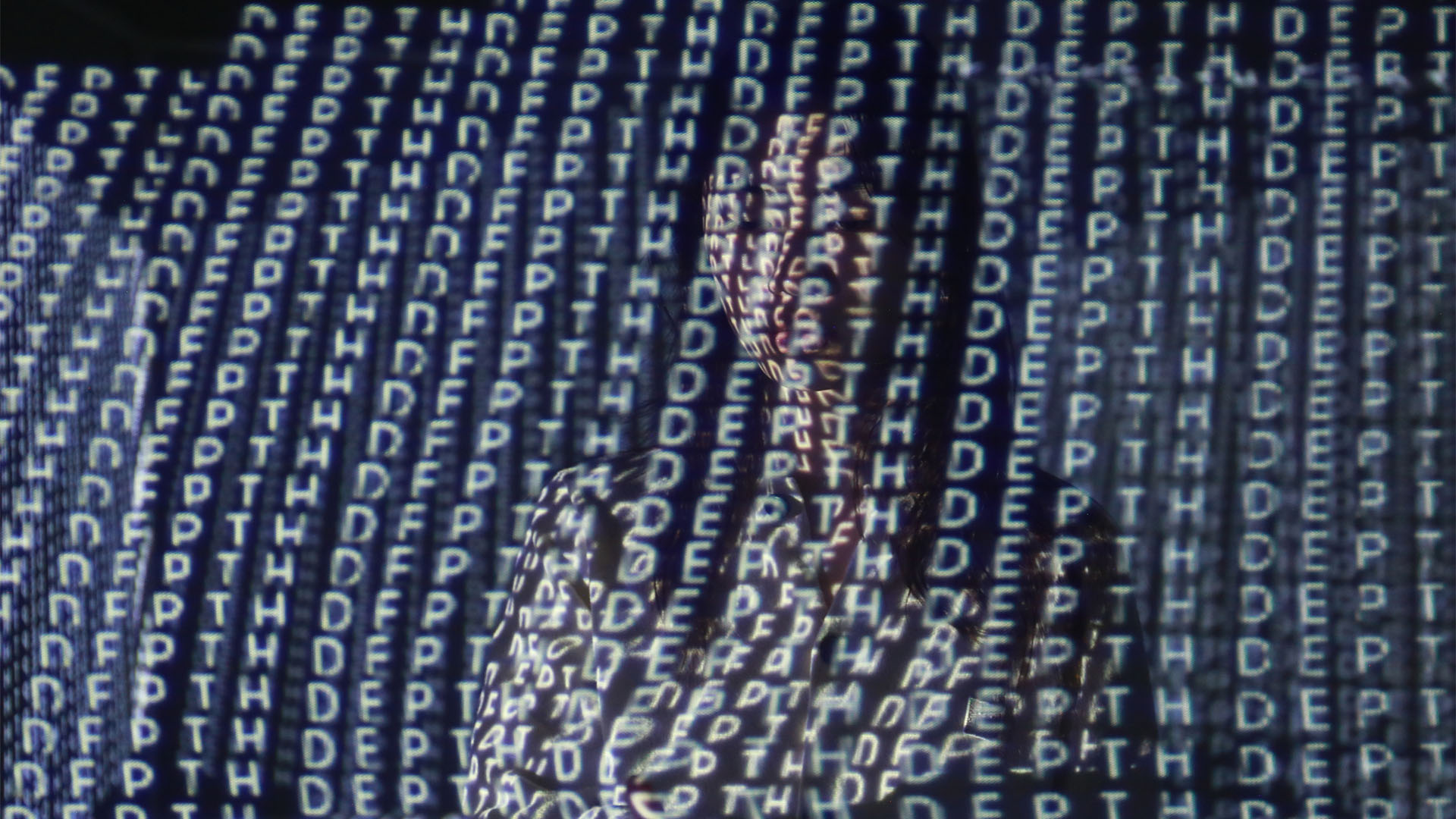Plane/Volume/Dimension — Spatial Web Technology
This project explores the application of 2D typographic standards in 3D space on the Spatial Web. It includes a series of experiments and a web-based repository of expressive, dimensional, and generative typography. The experiments have also been transformed into an interactive installation to examine how dynamic systems and responsive environments can enhance communication experiences. The project aims to encourage designers to experiment with typographic design on the Spatial Web and participate in the development of typographic systems for 3D spaces.
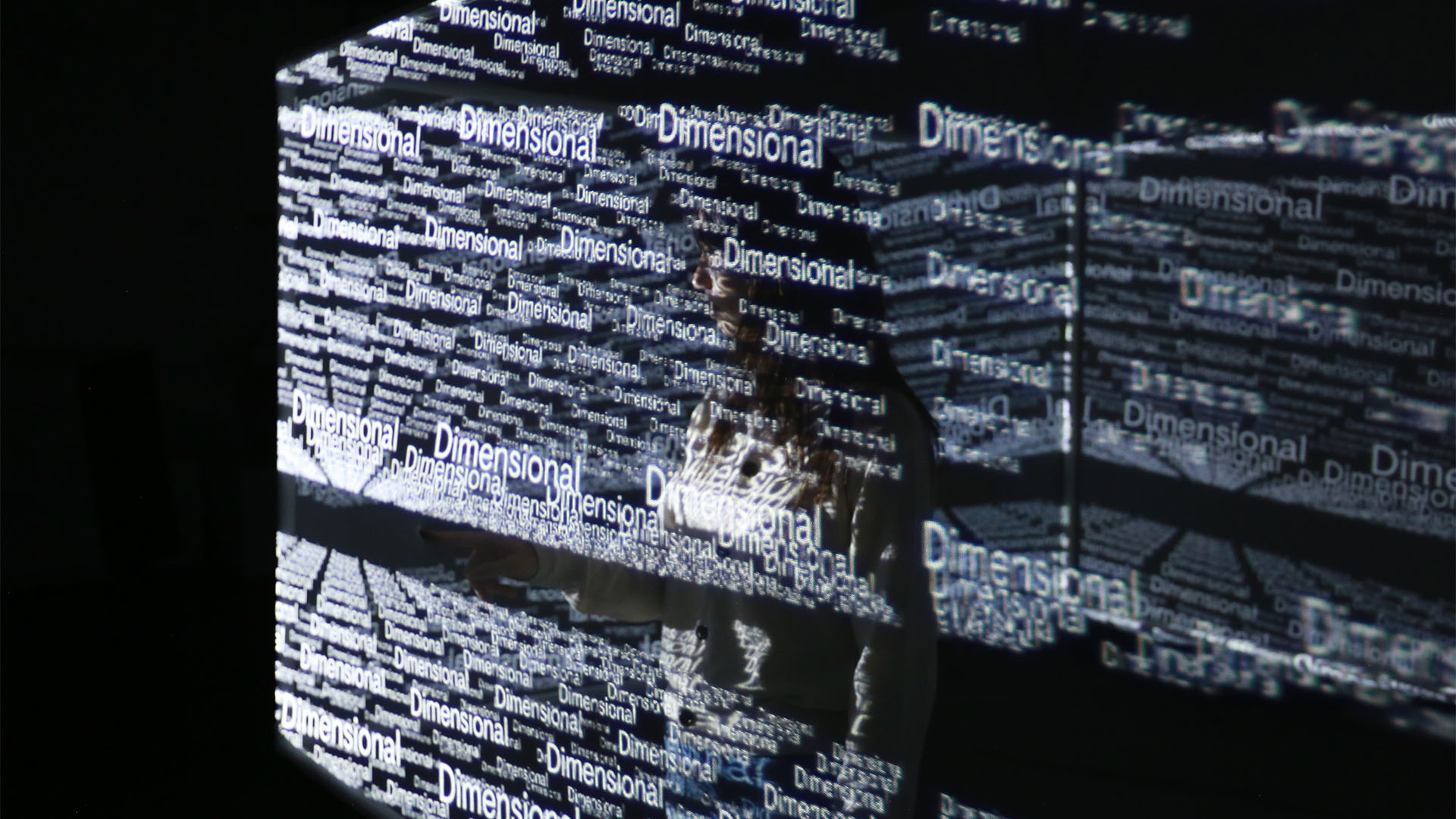
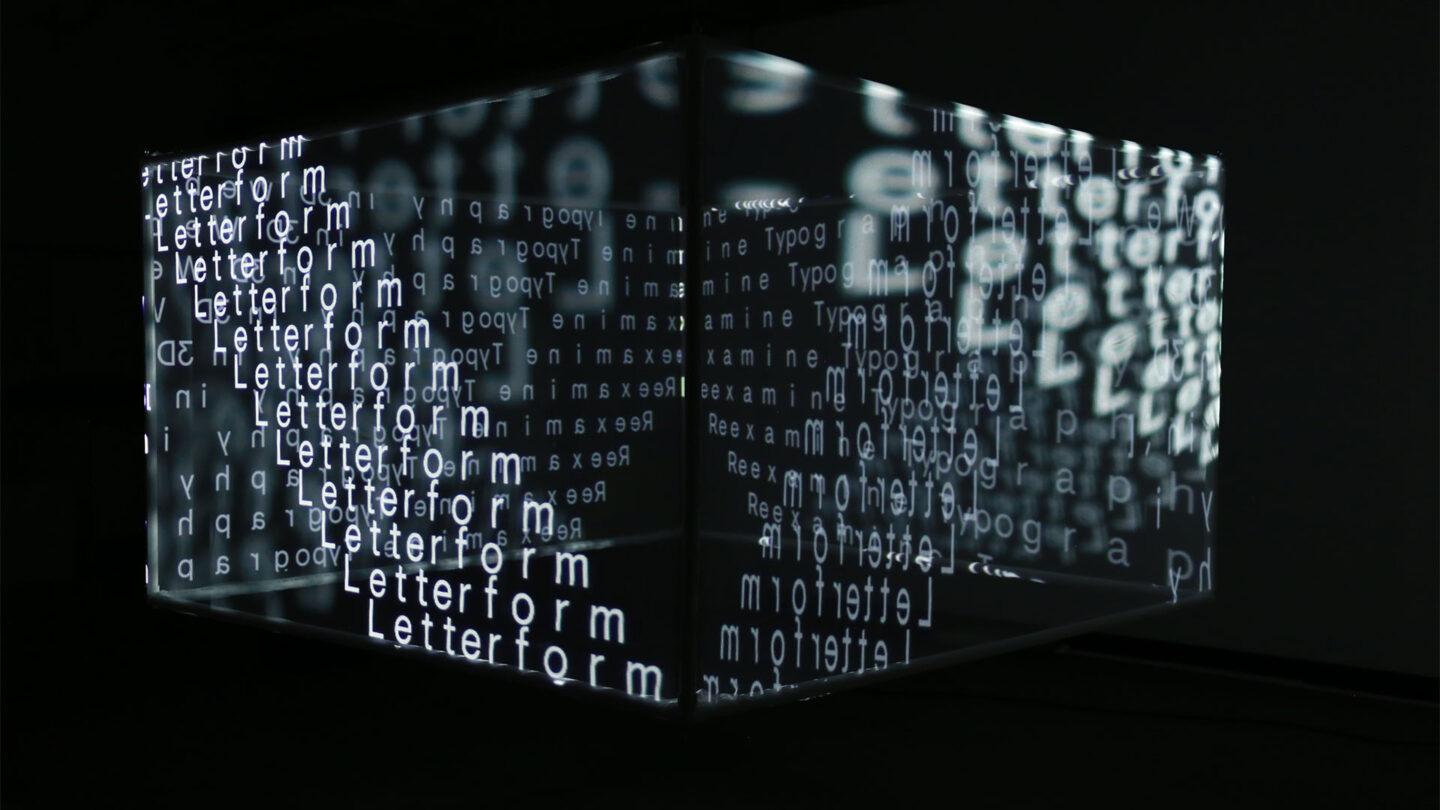
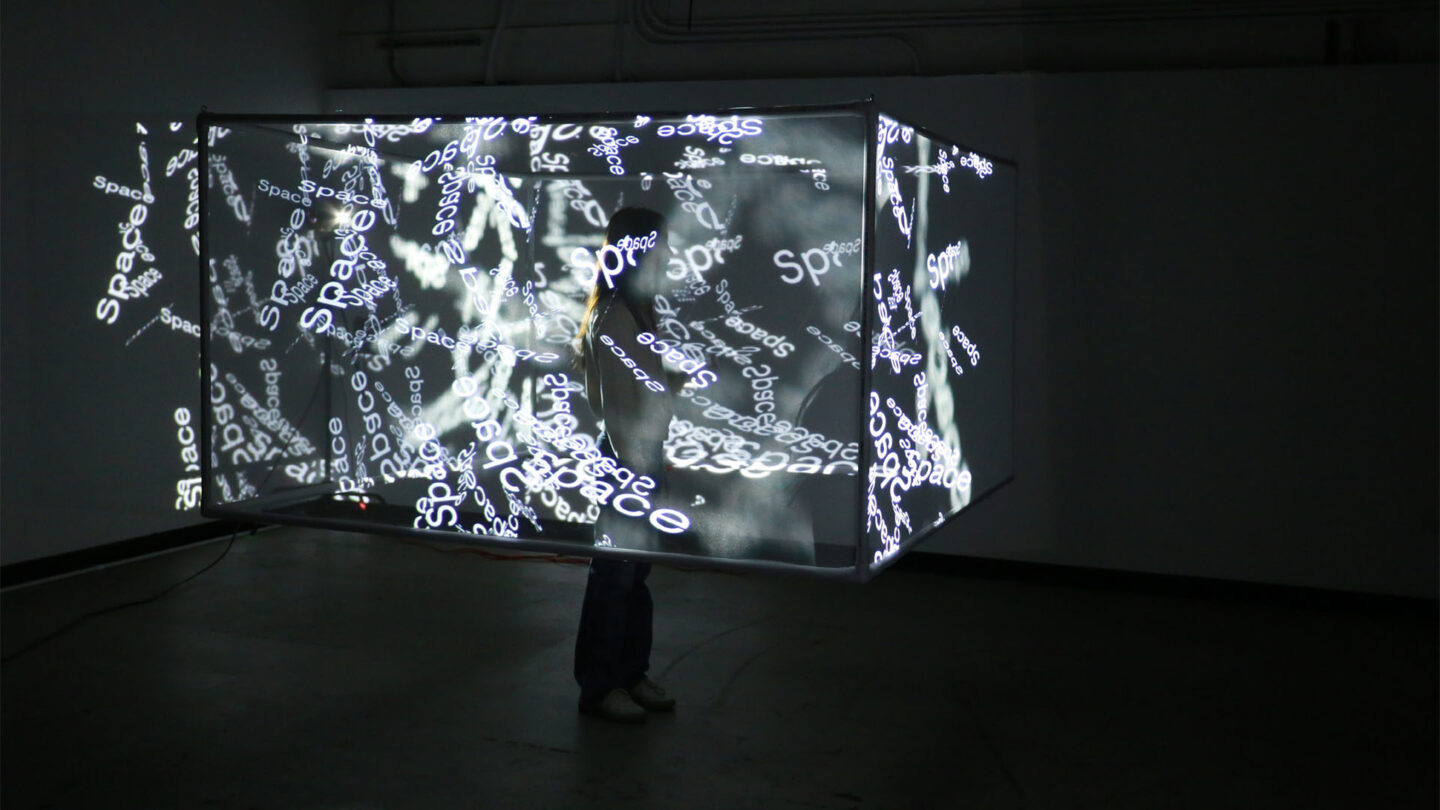
Project Overview
The challenge of this project lies in exploring how typography, a fundamental aspect of graphic design, can be adapted to the Spatial Web. The project seeks to answer questions such as how designers can actively participate in developing typographic systems for 3D spaces, the impact of generative methodologies on letterform behavior, and how dynamic systems and responsive environments can enhance communication experiences. Through a series of experiments and an interactive installation, the project aims to provide insights into the future of typography and the Spatial Web while encouraging designers to experiment and explore new possibilities in typographic design.
The vision of this project is to create a new paradigm in typographic design by exploring the potential of typography in three-dimensional space on the Spatial Web. The project seeks to bridge the gap between 2D graphic design and 3D design by adapting typographic standards from the former to the latter. The vision is to empower designers to create innovative and dynamic typographic systems that can be used in responsive environments and enhance communication experiences. The project also aims to foster a community of designers who are enthusiastic about experimenting with typographic design on the Spatial Web and contributing to the development of new typographic systems for 3D spaces. Ultimately, the vision is to create a new language of typography that is both expressive and functional in 3D spaces.
The project was designed and executed through a series of experiments that explored different aspects of expressive, dimensional, and generative typography on the Spatial Web. These experiments operate from screen to space, and they were transformed into a tangible interactive installation that provides users with control of their experience. Users interact with the installation using an accelerometer inside a small cube, and the use of translucent fabric creates an immersive experience both inside and outside the cube. The installation projection bounces off the room and onto various surfaces, providing an immersive experience for viewers.
The user experience of this interactive installation is multi-layered, allowing visitors to explore typography in three dimensions at various levels of complexity. Here are the three layers of the experience:
1. Word: The user begins by exploring individual letterforms in three-dimensional space. By manipulating the cube, users can move around the letter and observe it from different angles. The translucent fabric surrounding the cube adds an immersive quality to the experience, allowing users to fully engage with the letterform.
2. Phrase: Next, the user can explore phrases composed of multiple letters. By moving the cube in different directions, users can manipulate the phrase in three dimensions and see how the letters interact with one another. The projection bounces off the room and onto various surfaces, creating an engaging and dynamic experience.
3. Paragraph and Beyond: Finally, the user can explore paragraphs and more complex typographic compositions. By manipulating the cube, users can zoom in and out, move through the paragraphs, and see how the text is composed in three dimensions. The immersive experience provided by the installation adds a new level of engagement and understanding of typography and how it can be applied to three-dimensional space.
Overall, the user experience of this interactive installation offers a unique and innovative way to approach typography and its relationship to spatial design. By allowing users to engage with typography in three dimensions, this installation provides a new perspective on the future of the Spatial Web and how we interact with information in space.
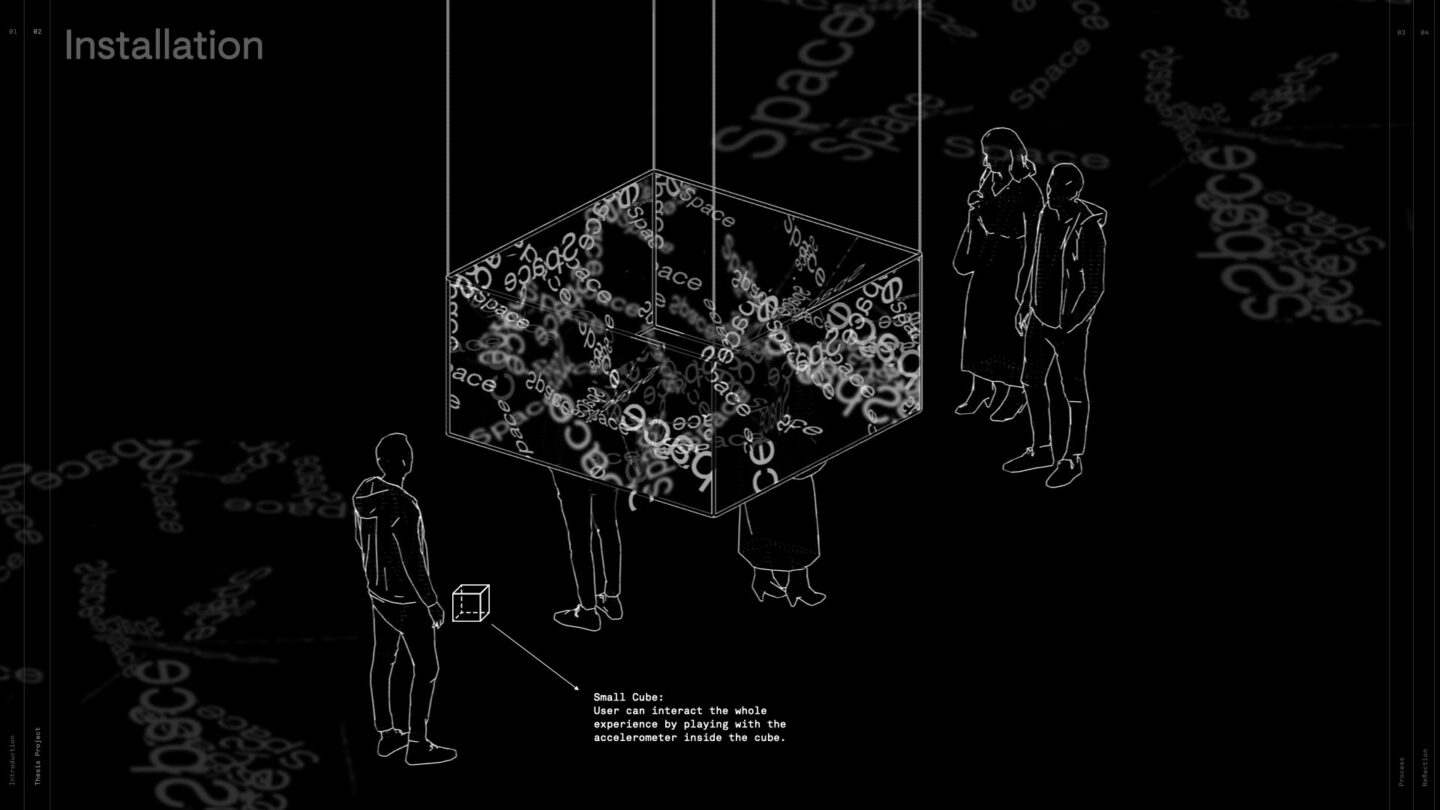
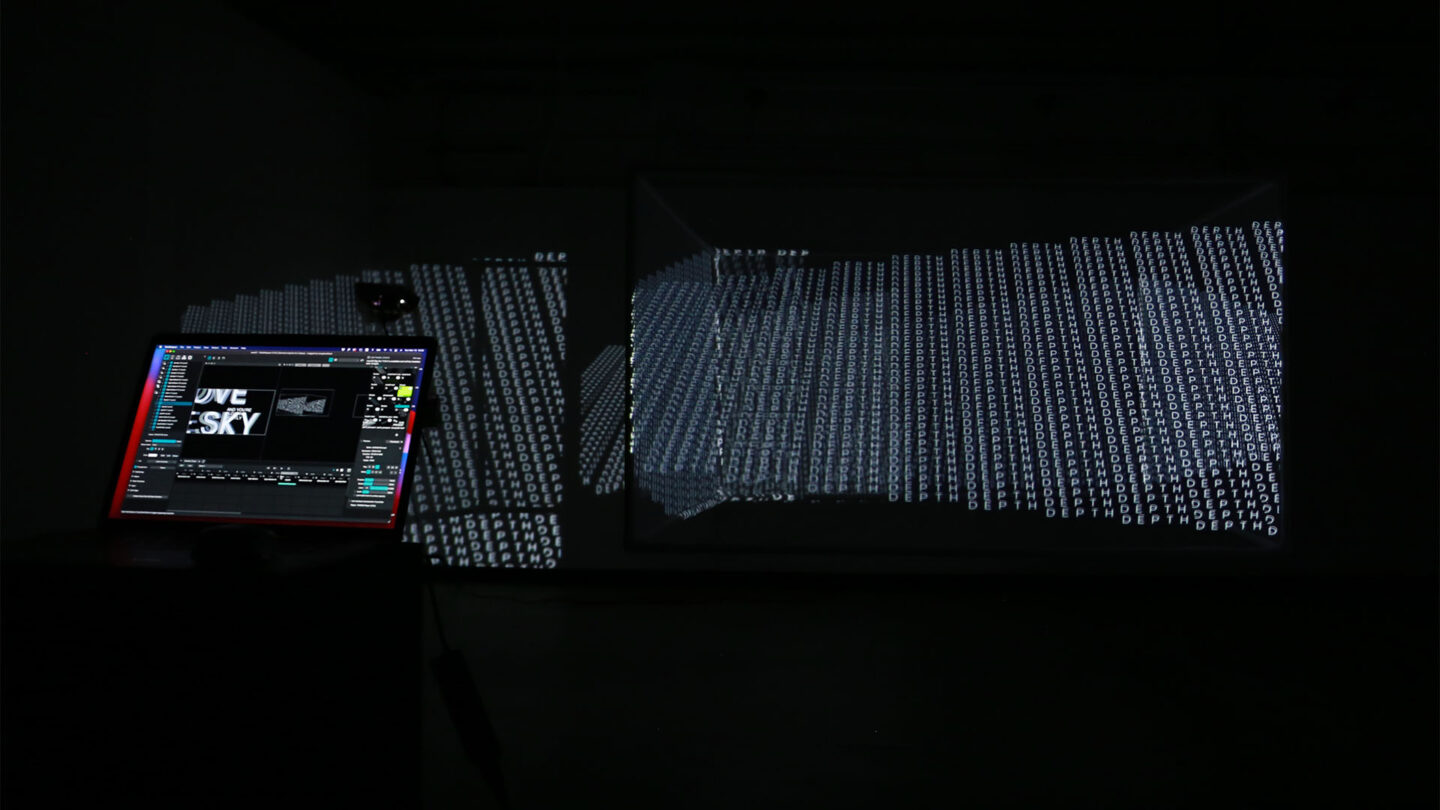
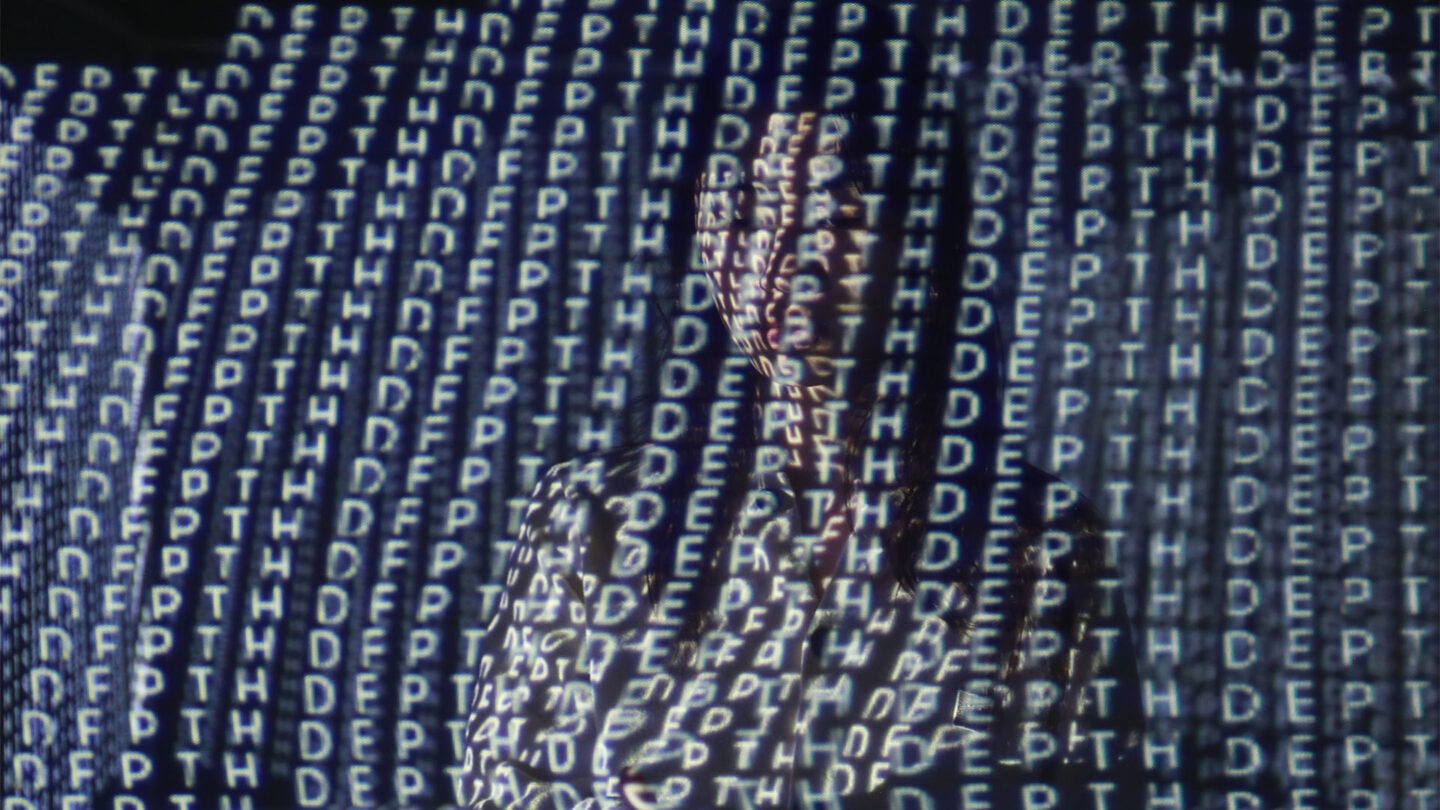
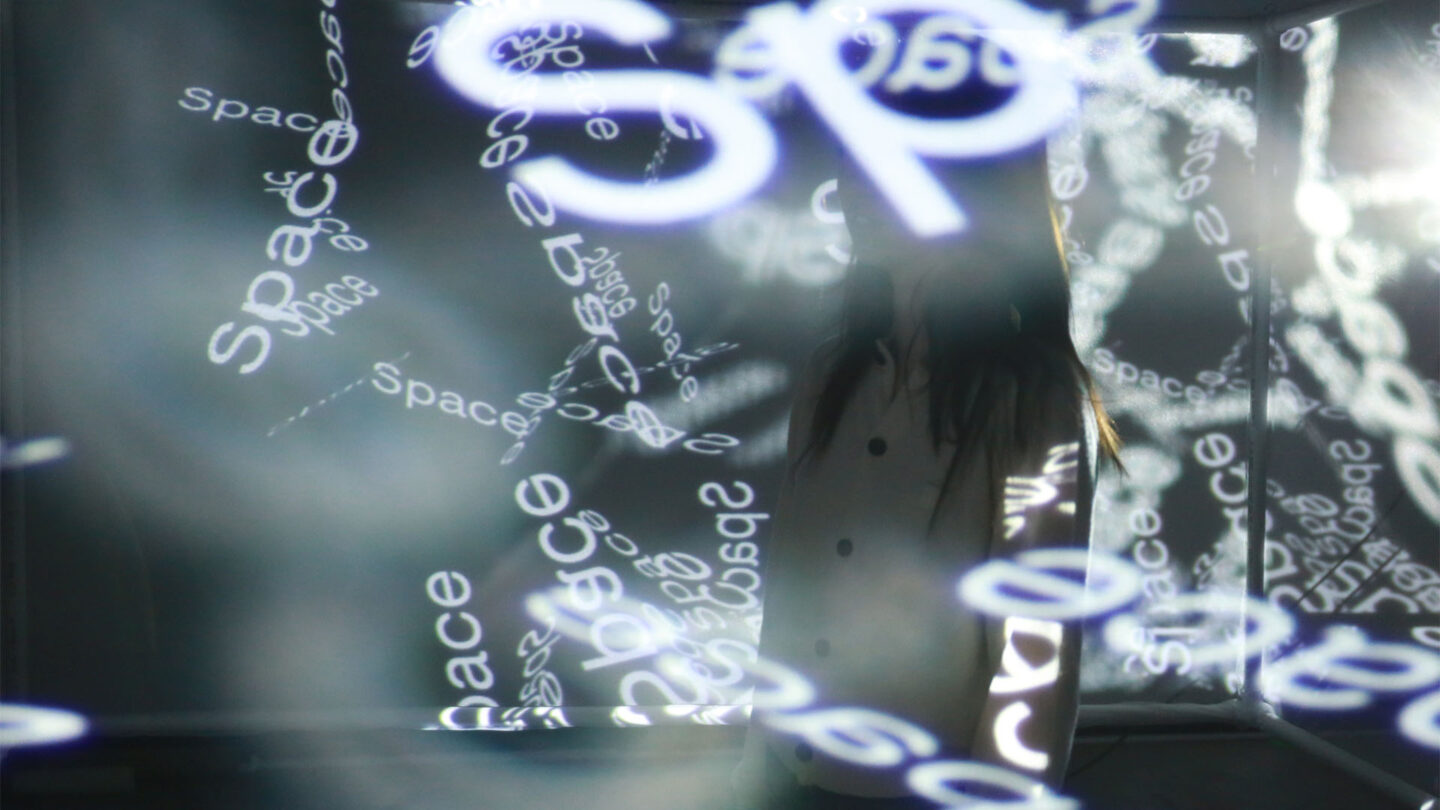
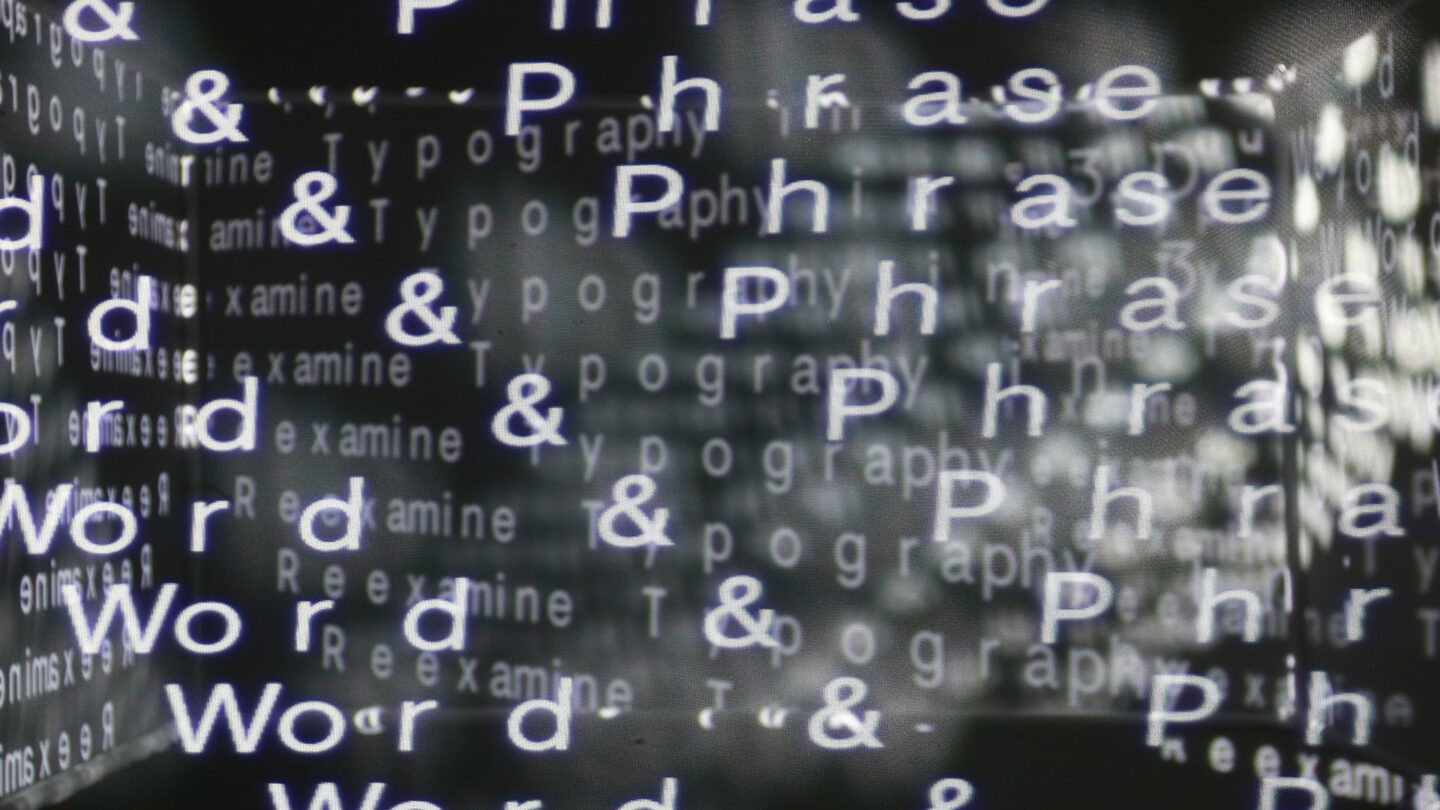
Project Details
Design Team
Tong Li
Collaborators
Brad Bartlett, Miles Mazzie, Roy Tatum
Photo Credits
Tong Li
Open Date
April 2022
